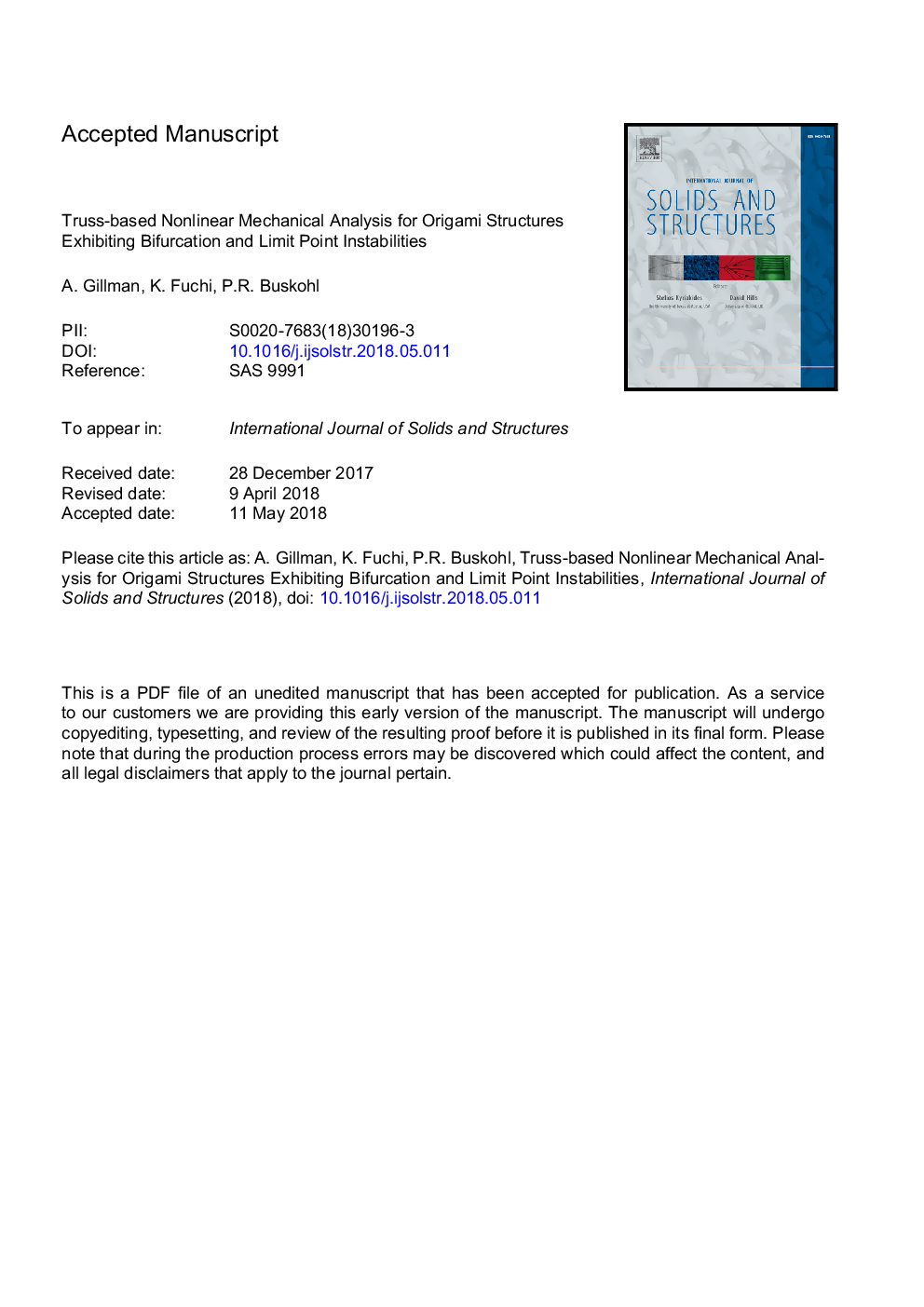| کد مقاله | کد نشریه | سال انتشار | مقاله انگلیسی | نسخه تمام متن |
|---|---|---|---|---|
| 6748228 | 1430164 | 2018 | 39 صفحه PDF | دانلود رایگان |
عنوان انگلیسی مقاله ISI
Truss-based nonlinear mechanical analysis for origami structures exhibiting bifurcation and limit point instabilities
دانلود مقاله + سفارش ترجمه
دانلود مقاله ISI انگلیسی
رایگان برای ایرانیان
کلمات کلیدی
موضوعات مرتبط
مهندسی و علوم پایه
سایر رشته های مهندسی
مهندسی عمران و سازه
پیش نمایش صفحه اول مقاله

چکیده انگلیسی
Origami, the art of paper folding, is a technologically transformative art with applications at many length scales from material microstructure design to space deployable structures. The transformation of a two-dimensional fold pattern to a three-dimensional structure makes origami a practical basis for deployability, light-weight materials, and self-actuation. In order to predict the complex motions of origami structures including path traversal of instabilities, accurate and efficient modeling techniques are required. While many approaches consider rigid facets and/or linear approximations to rotations, a truss and hinge finite element method is presented here within a global coordinate system framework to accurately capture the geometric nonlinearities while allowing for small to moderate facet deformation. Accurately capturing these modes of deformation is critical toward understanding the elastic energetic states required for design and analysis of multistable origami structures and mechanical metamaterials. Particular formulation developments that we address to solve origami mechanics problems include formulation of a continuous and differentiable fold angle, strategy for selecting fold path off the flat state, and integration of common numerical approaches important for origami (large rotation formulation, enforcement of periodic boundary conditions for tessellations, arc-length continuation method for solving highly nonlinear loading paths, and a perturbation strategy for handling bifurcations). After formulating this truss finite element method, we verify our modified finite element method on well-studied structures. The waterbomb fold pattern is studied, and the interplay of the stretching and folding energies are considered toward design of a bistable structure that exhibits a fold based snap-through instability. This study is followed by analysis of a cylindrical network of waterbombs (axial periodicity) that exhibits a stretch driven instability. Lastly, a tessellated square twist pattern, exhibiting multiple bifurcations off the flat state is presented that employs all aspects of our numerical method.
ناشر
Database: Elsevier - ScienceDirect (ساینس دایرکت)
Journal: International Journal of Solids and Structures - Volume 147, 15 August 2018, Pages 80-93
Journal: International Journal of Solids and Structures - Volume 147, 15 August 2018, Pages 80-93
نویسندگان
A. Gillman, K. Fuchi, P.R. Buskohl,